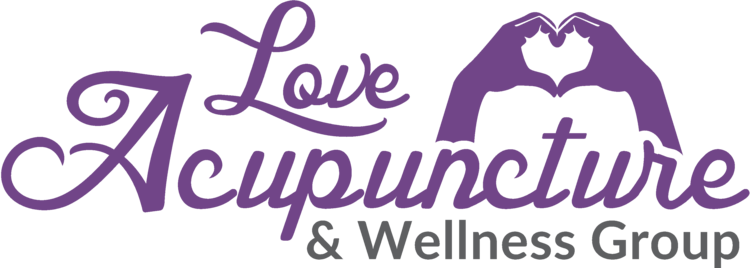Acupuncture for Addictions & Cravings
Addiction is a chronic disease influenced by many things: a person’s brain chemistry, their environment, and even their genetics play a part in susceptibility to addiction. People with substance abuse disorders, addictions, and cravings may exhibit compulsive behaviors when engaging with substances.
According to American Addiction Centers, 19.7 million Americans 12 years of age or older struggled with substance abuse of some kind. Of these, 74% of adults suffered from an alcohol abuse disorder. The same year as the study was conducted, it was found that one in eight adults struggled with alcohol and drug use disorders at the same time.
While substance abuse disorders and cravings for particular substances can be dangerous, the good news is that if you struggle with one or more of these disorders, you are not alone. Treatment is available and effective. In fact, according to the American Society of Addiction Medicine, “Prevention efforts and treatment approaches for addiction are generally as successful as those for other chronic diseases.”
Along with specialized treatment for addiction and cravings, including but not limited to counseling, anonymous groups, and rehabilitation centers, research has been supporting the positive role acupuncture may play in treating substance abuse disorders.
An article from Han, Cui, and Wu summarizes the origins of a specialized acupuncture protocol for treating substance abuse disorders, cravings, and withdrawal symptoms. The National Acupuncture Detoxification Association, or NADA, created an acupuncture protocol specifically for treating substance abuse disorders in the 1970s, which has been popularly used since then in clinics and treatments centers particularly in the United States.
This NADA protocol has had significant success in treating addiction and cravings. According to the Cleveland Clinic, “The NADA protocol has been shown to decrease cravings for alcohol, drugs, or even cigarettes.” They go on to say that it can also be used to treat gambling problems and food addiction or cravings and that it has success in lessening the intensity of withdrawal and its associated symptoms.
The NADA protocol has gained such popularity in clinics, rehabilitation centers, and regular acupuncture clinics, that an article from Carter et al. describe it as, “one of the most commonly used forms of acupuncture treatment in the United States.” They cite a 2012 report from the Substance Abuse and Mental Health Services Administration (SAMHSA) that counted over 600 licensed addiction treatment programs that use acupuncture as a tool in their therapeutic treatments for addiction.
That same article states that when the NADA protocol and other acupuncture points are used in the treatment of substance abuse disorders, there is an associated decrease in positive drug tests, an increase in completed treatment programs, and an improvement in patient satisfaction while keeping down patient costs.
Research supports its ability to help people toward recovery. The article from Carter et al. perhaps sums up the research best, stating, “The current trend in literature suggests that NADA protocol when added to traditional treatment appears to be correlated with better outcomes in maintaining abstinence, improving overall health and sense of well-being.”
But that isn’t all. The Cleveland Clinic reports that folks who utilize acupuncture, and specifically the NADA protocol, in their treatment for a substance abuse disorder and/or craving found an increased quality of life following a full course of treatment. According to their article, patients who were treated with the NADA protocol, “reported feeling better about themselves and had more energy.”
Like other treatments for substance abuse, acupuncture isn’t a “magic wand” treatment for these disorders, wherein one treatment will cure an individual suffering from a substance abuse disorder. However, it does offer a possible effective alternative to pharmacological interventions and has had great success in helping people through other forms of treatment.
One of our providers in particular, Ryan Love, has experience and specialty in treating folks for substance abuse disorders. Another one of our providers, Dr. Tanya Love, has experience in treating folks for food cravings. Both utilize the NADA protocol in their treatments, and are happy to discuss other forms of treatment and therapy available to anyone who walks in the door to help them have the best chance at recovery.
For those experiencing a crisis or in need of acute care please get the help you need immediately. Do not wait for an appointment. If you are in an emergency, call 911. If you are not in an emergency, but need help right away, we recommend calling:
SAMHSA’s National Helpline: 1-800-662-HELP (4357)
Alcoholics Anonymous: 800-839-1686
National Suicide Prevention Lifeline: 1-800-273-8255
If you’re one of the many Americans struggling with addiction and cravings, we encourage you to find the help you need. One of your steps may certainly be contacting our offices by emailing info@loveacu.net or calling us at (503) 343 9851 to learn more or to be connected with helpful resources. When struggling with these chronic conditions, you are not alone, and help is available. We would be happy to get you on the path toward recovery.
For Further Reading:
“Acupuncture for Addiction Recovery,” American Addiction Centers, Recovery.org; Marisa Crane, 2022.
“Alcohol and Drug Abuse Statistics,” American Addiction Centers; Editorial Staff, 2022.
“Can NADA Acupuncture Help with Addiction and Trauma?” Cleveland Clinic, HealthEssentials; 2021.
“Definition of Addiciton,” American Society of Addiction Medicine; 2019.

